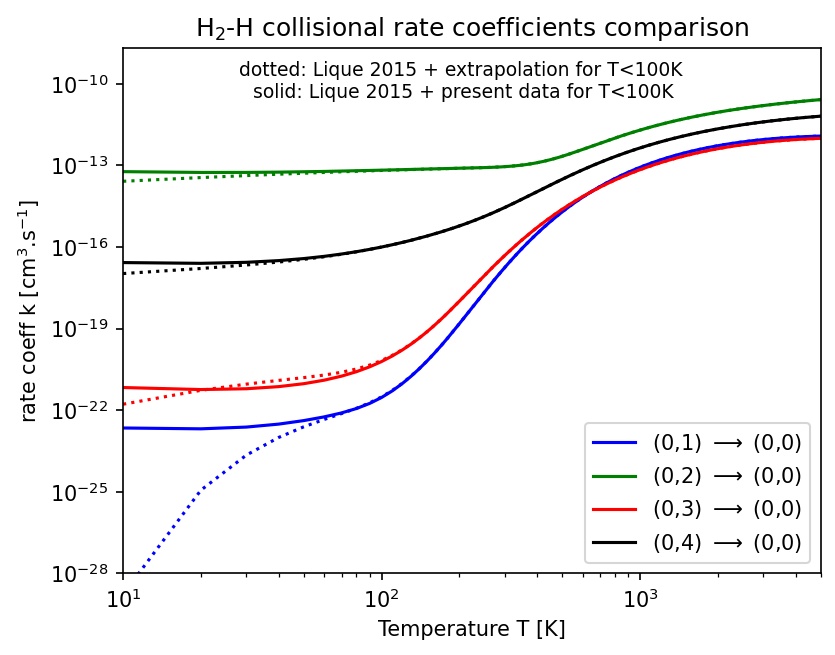by François Lique & Sándor Demes & Cheikh Bop & Marie Gueguen & Paul Pirlot Jankowiak & Amélie Godard Palluet & Maxime Gontel, on
Presentation of the workshop
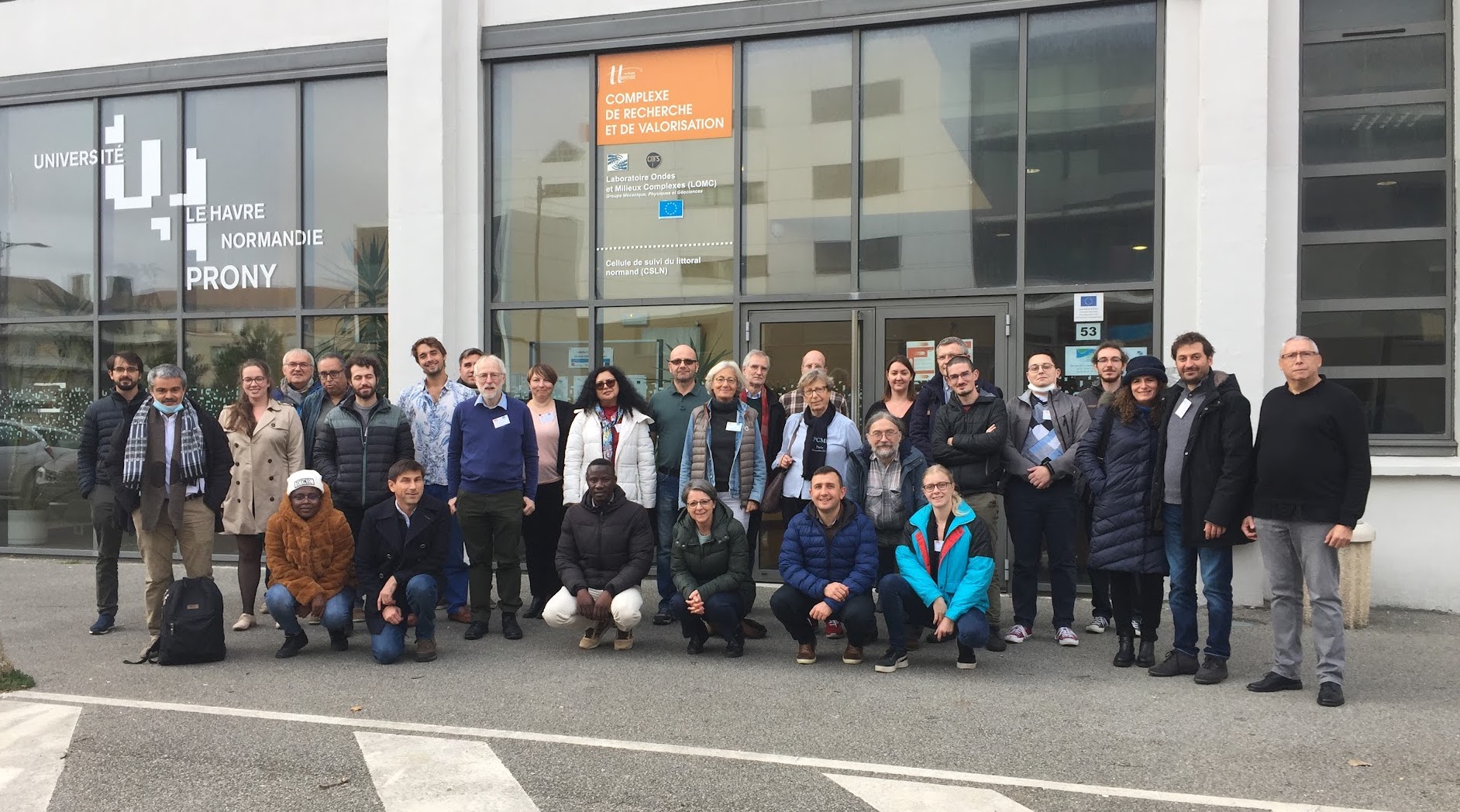
From the 18th to the 19th of November 2021, the team is participating to a workshop on the ionization fraction in the interstellar medium in Le Havre.
In this workshop, the aim is to gather observers, modelers and chemical-physicists and discuss how recent advances in observational capabilities, model development, and experimental and theoretical studies of the key microphysical processes can shed a new light on our knowledge of the ionization fraction in the interstellar medium.
C. Bop, S. Demes, A. Godard Palluet, P. Pirlot Jankowiak, F. Lique and M. Gontel attended and presented their work during this workshop.
Collisional excitation of NS+ induced by ortho- and para-H2 : towards a non-LTE abundance modeling - C. Bop, Y. Kalugina and F. Lique
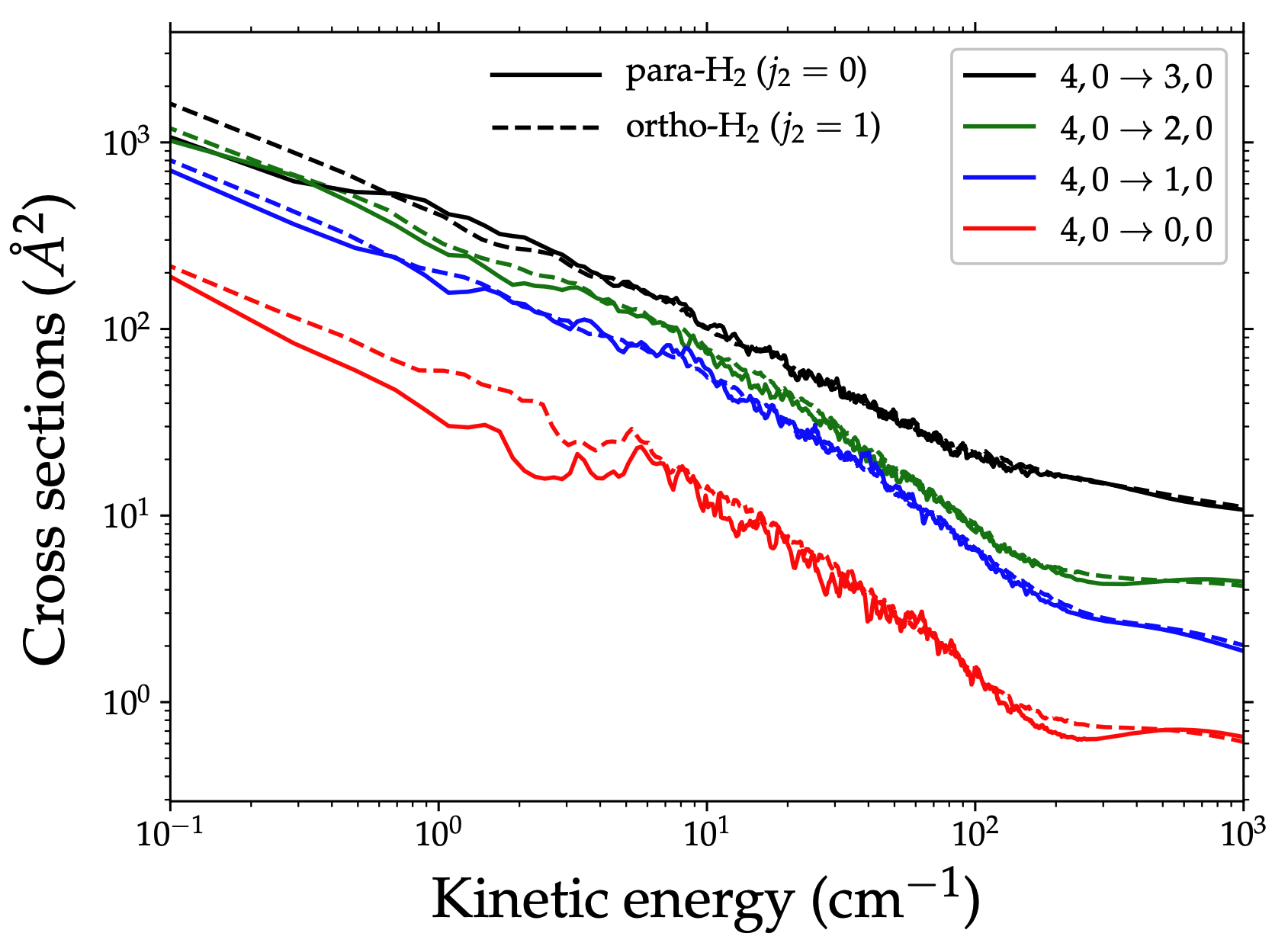
Recent observations of sulphur-bearing molecules in photo-dissociation regions (PDR) such as the Horsehead nebula [1] have revived investigations on the sulphur chemistry, which is still poorly understood. Surface chemistry likely plays a key role in the formation of gaseous S- bearing compounds namely S2H, SO+ , NS, and NS+ [2]. These latter, in particular NS+, are considered as tracers of PDRs [1]. NS+ is also seen as good barometer and thermometer in dark molecular clouds due to its presence in different evolutionary stages [3].
Despite holding a small percentage of the S-budget, its key role in the chemistry of sulphur [1] makes the abundance of NS+ worth determining accurately. For instance, the large variation of the NS/NS+ abundance ratio observed between cold molecular clouds (30−50) and hot cores (> 500) suggests different NS and NS+ formation paths in these regions [3, 4]. Therefore, constraining the NS+ abundance, especially in PDRs and hot cores, will bring better insights on the sulphur chemistry.
Accurate abundance modeling requires prior determination of collision rate coefficients. Without these data, local thermodynamic equilibrium (LTE) which is rarely verified in space, would be used. Such an approximation has led to underestimate the abundance of NS by a factor of 1.5 − 2.5 [3]. Due to the lack of collision data, these authors used the rate coefficients of CS [5] for both NS and NS+ while neglecting the fine structure. Since then, NS+ has become the target of rotational energy transfer induced by collision. Therefore, we aim at determining rotational rate coefficients of NS+ due collision with to ortho- and para-H2, the most abundant species in the interstellar medium.
Using the CCSD(T)-F12/aVTZ level of theory, we computed a 4D potential energy surface (PES) to describe the interaction between NS+(1Σ+) and H2(1Σ+). We obtained a global minimum of 849.88 cm-1 which corresponds to a coplanar configuration of the complex. From this PES, we calculated cross sections for the 26 low-lying rotational levels of NS+ (j1 = 0−25) for total energies ranging up to 2000 cm-1 . Then, collisional rate coefficients were derived for temperatures ranging up to 250 K. These data will be used to reinterpret the NS+ observational spectra for both molecular clouds and PDRs.
[1] R.-M. et al. Astronomy & Astrophysics, vol. 628, p. A16, 2019.
[2] A. e. a. Fuente The Astrophysical Journal Letters, vol. 851, no. 2, p. L49, 2017.
[3] J. e. a. Cernicharo The Astrophysical journal letters, vol. 853, no. 2, p. L22, 2018.
[4] B. Tercero and C. et al. Astronomy & Astrophysics, vol. 517, p. A96, 2010.
[5] F. Lique and A. Spielfiedel Astronomy & Astrophysics, vol. 462, no. 3, pp. 1179–1185, 2007.
The excitation of H3O+ by H2 : toward new measurements of ionization fraction in the ISM - S. Demes and F. Lique
The hydronium cation (H3O+) has been detected in both dense and diffuse molecular clouds of the interstellar medium (ISM) [1]. It plays a crucial role in oxygen and water chemistry in these regions and it can be also used as a tracer of ionization fraction in the ISM [2]. Finding the abundance of H3O+ cations thus could be used as an indirect path to determine the abundance of interstellar water.
We have studied the rotational excitation of hydronium cations by molecular hydrogen for the first time. An accurate 5D potential energy surface (PES) was calculated for this collisional system [3]. State-to-state rotational de-excitation cross sections were computed up to 1700 cm-1 total energy by the close-coupling method implemented in the HIBRIDON scattering code. The corresponding thermal rate coefficients were derived up to 300 K. Both the ortho- and para- nuclear spin isomers of the H3O+ cation were considered.
Radiative transfer calculations were also provided which showed that the new rate coefficients have a non-negligible impact on the astrophysical observables (e.g. radiance and excitation temperatures). Obviously, the new collisional rate coefficients allows one to more precisely interpret the astrophysical observations of H3O+ both in the dense and diffuse interstellar clouds by using appropriate radiative transfer models.
[1] F.F.S van der Tak et al., A&A (2008) 477, L5.
[2] A. Sternberg et al., Ap. J. (1987) 320, 676.
[3] S. Demes et al., J. Chem. Phys. (2020) 153, 094301.
[4] F.L. Schöier et al., A&A (2005) 432, 369.
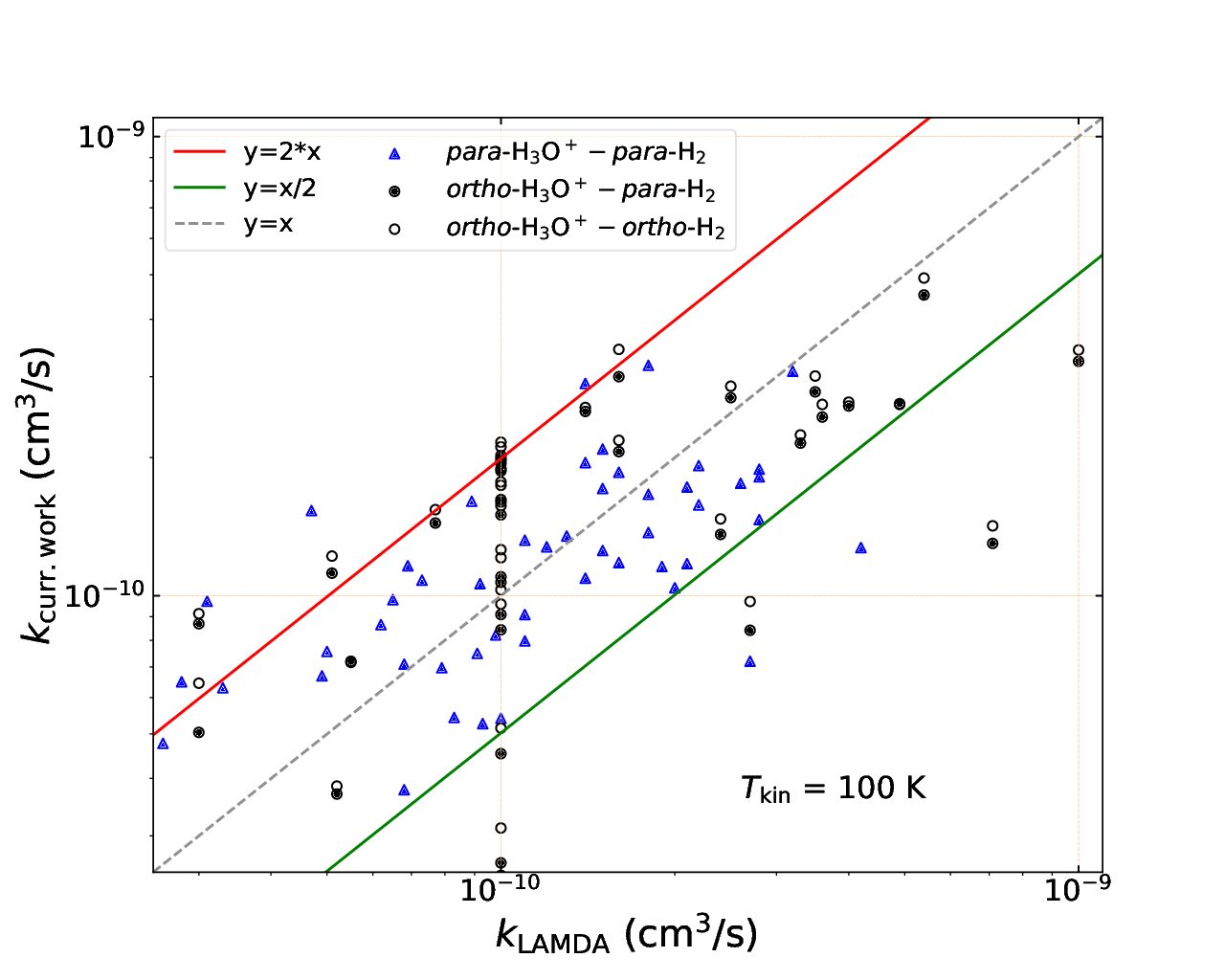
Collisional excitation of CO2 by He: New potential energy surface and scattering calculations - A. Godard Palluet, F. Thibault and F. Lique
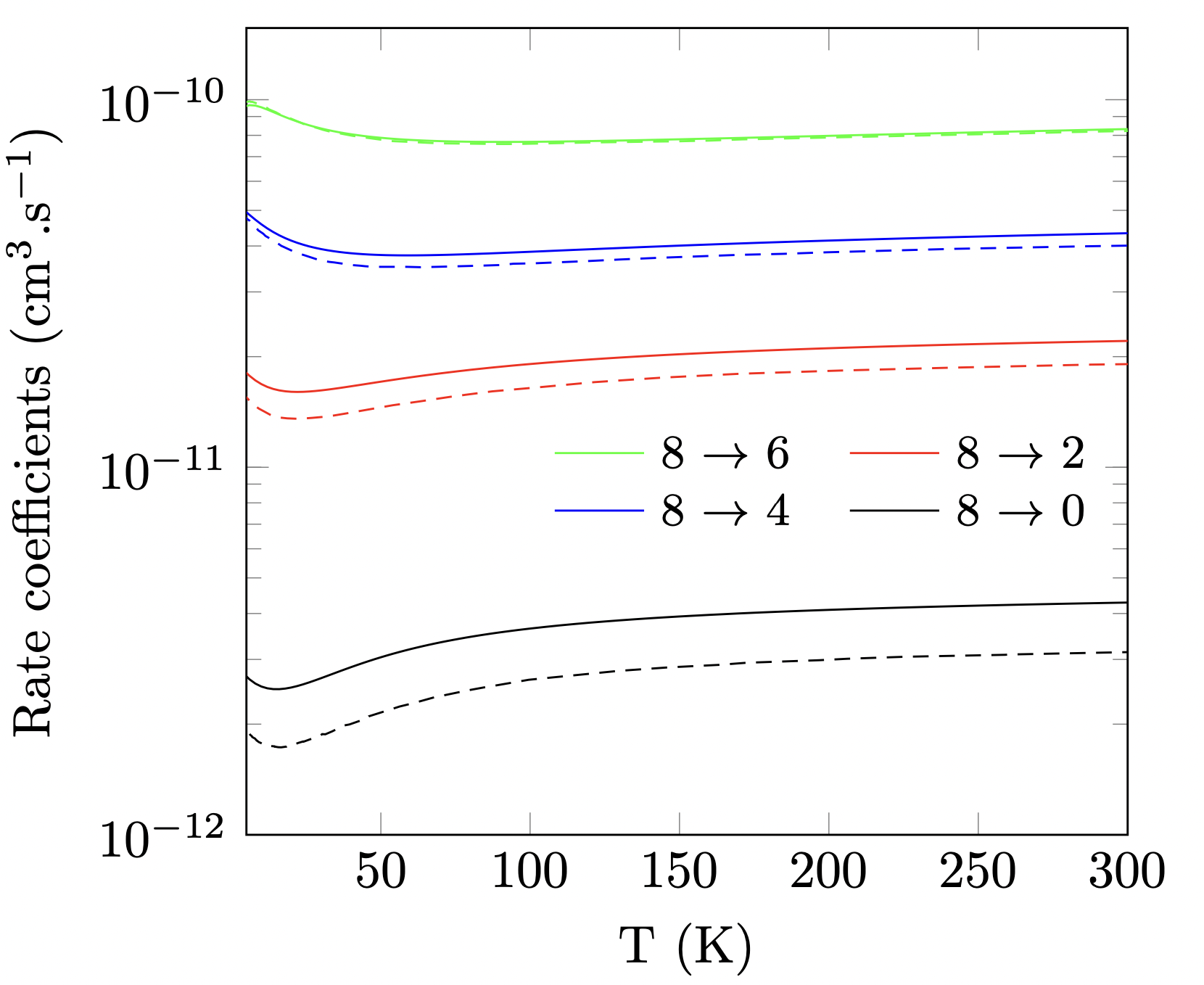
The correct modeling of the ionization fraction in protoplanetary discs requires the prior estimation of the chemical composition of the matter.
Molecular abundances in non-LTE media such as protoplanetary discs are obtained thanks to radiative transfert models that considers excitation of molecules by both collisions and radiations. Since CO2 is known to be an abundant molecule in protoplanetary discs, which are caracterized by temperatures below 200 K, it is then of interest to study its collisional excitations.
In this talk, I will present our recent study of the astrophysically relevant CO2-He collisional system which is also a prototypical system for more complex CO2-bearing systems. A new potential energy surface was calculated with a Coupled Cluster method and a complete basis set extrapolation. Its accuracy was tested through the comparison of bound states and pressure broadening coefficients with experimental data. Finally, revised collisional data were provided in the 10 - 300 K temperature range.
On rate coefficients, our new results can have up to a factor of 1.5 difference with the ones previously published by Yang & Stancil [1]. Therefore, these new data can lead to a revision of the CO2 abundance and thus, to the physical conditions, such as the ionization fraction, in astrophysical media were CO2 is present.
[1] B. Yang & P. C. Stancil, J. Chem. Phys., 128 (2009)
Theoretical study of collisional excitation of NH by H2 in the interstellar medium - P. Pirlot Jankowiak, Y. N. Kalugina, R. Ramachandran, G. Raffy, P. J. Dagdigian and F. Lique
Despite the increasing number of observations of several nitrogen hydrides molecules (NH, NH2, NH3,...) in molecular clouds, the nitrogen abundance in the interstellar medium (ISM) is still subject to debate. Among nitrogen hydrides, the NH radical is of key importance since it is producted from at least two main paths, the dissociative recombination of N2H+ and NH2+ . It is then a potential accurate probe of Nitrogen chemical network [1] and accurately modelling the NH abundance in molecular clouds is of great interest.
Density conditions in the ISM does not allow maintaining collisional processes large enough to sustain the local thermodynamic equilibrium (LTE) condition. Hence, the modelling of the observational spectra requires to take into account the competition between radiative and collisional processes. In the ISM, H2 is the dominant collider but to the best of our knowledge, there are a lack of collisional data for the NH-H2 system.
Calculations of fine structure resolved excitation cross sections and rate coefficients for the NH-H2 collisional complex will be presented. The collisional data were computed from a new four dimensional potential energy surface [2]. Binding energy of the complex was calculated to check the validity of the PES through experimental data as a benchmark. Cross sections calculations are performed using the close-coupling approach for NH with both ortho-H2 and para-H2 partners. It appears a very different general behavior between the two partners. Calculations implying NH with ortho-H2 show a propensity rule in favor of ∆N = 1 transitions whereas a propensity rules in favor of ∆N = 2 is seen for collisions with para-H2. F-conserving transitions were found to be larger than F-changing transitions. We compare the new NH-para-H2 rate coefficients with previous NH-He data, used as a proxy of NH-H2 for astrophysical models. We find differences up to one order of magnitude. The new data are expected to improve abundances calculations of NH in molecular clouds and then better constrain the abundances of nitrogen species such as N2H+ which is a trace of high electronic fraction in interstellar media [3].
[1] R. Le Gal, P. Hily-Blant, A. Faure, G. Pineau des Forêts, C. Rist, and S. Maret, 562, A83 (2014)
[2] P. Pirlot, Y. N. Kalugina, R. Ramachandran, G. Raffy, P. J. Dagdigian, and F. Lique, The Journal of Chemical Physics 155, 134303 (2021)
[3] C. B. de Boisanger, F. P. Helmich, and E. F. van Dishoeck, Astronomy and Astrophysics 310, 315 (1995)

CF+: A powerful probe of physical conditions in PDRs - B. Desrousseaux, F. Lique and J. R. Goicoechea

The detection of CF+ in interstellar clouds potentially allows astronomers to infer the elemental fluorine abundance and the ionization fraction in ultraviolet-illuminated molecular gas. Because local thermodynamic equilibrium (LTE) conditions are hardly fulfilled in the interstellar medium (ISM), the accurate determination of the CF+ abundance requires one to model its non-LTE excitation via both radiative and collisional processes.
In this presentation, we will first present new quantum calculations of rate coefficients for the rotational excitation of CF+ in collisions with both para- and ortho-H2. The calculations are based on a new highly four dimensions potential energy surface describing the interaction between CF+ and H2. Then, we will demonstrate through non-LTE excitation models that a population inversion of CF+ levels exists at physical conditions typical of ISM photodissociation regions (PDRs). Finally, we will show how the use of these models allows for the fitting of the CF+ emission lines previously observed toward the Orion Bar and Horsehead PDRs. The radiative transfer models achieved with these new rate coefficients allow the use of CF+ as a powerful probe to study molecular clouds exposed to strong stellar radiation fields.
New excitation and reaction rate coefficients for modeling the primordial Universe - M. Gontel, A. Faure, F. Lique, P. Hily-Blant and G. Pineau des Forêts
Hydrogen plays a crucial role in the chemistry and the thermodynamics of the primordial universe, prior to the formation of the first stars. H2 and HD, two molecules whose cooling effect is essential in the formation of the first stars and structures, are formed mainly through ionic reactions involving charged species like H2+ , H- or D+. In addition, excitation of H2 by H and H+ plays an important role since it allows ortho-para-H2 conversion, strongly influencing the cooling essential for the star formation.
In this talk, we will present an up-to-date and improved chemical network for primordial chemistry based on previous commonly used networks. It includes the most recent experimental and theoretical results on the rate coefficients of the main reactions and is valid for most of the reactions between 10 K and 10000 K. We will also present new state-to-state data and ongoing work on the collisional excitation of H2 by H, H+ and He. In particular, improve- ments at low temperatures of recently calculated rate coefficients for H2-H will be presented. Our chemical network and collisional data should be of valuable uses, most notably for future simulations of primordial gas evolution.
